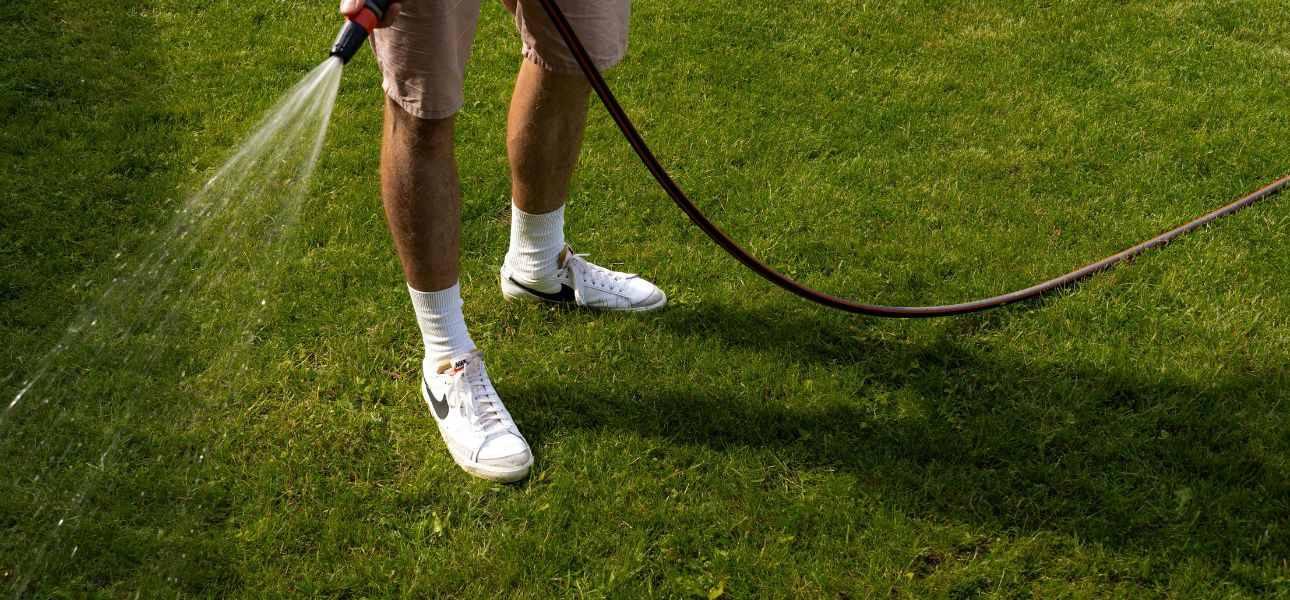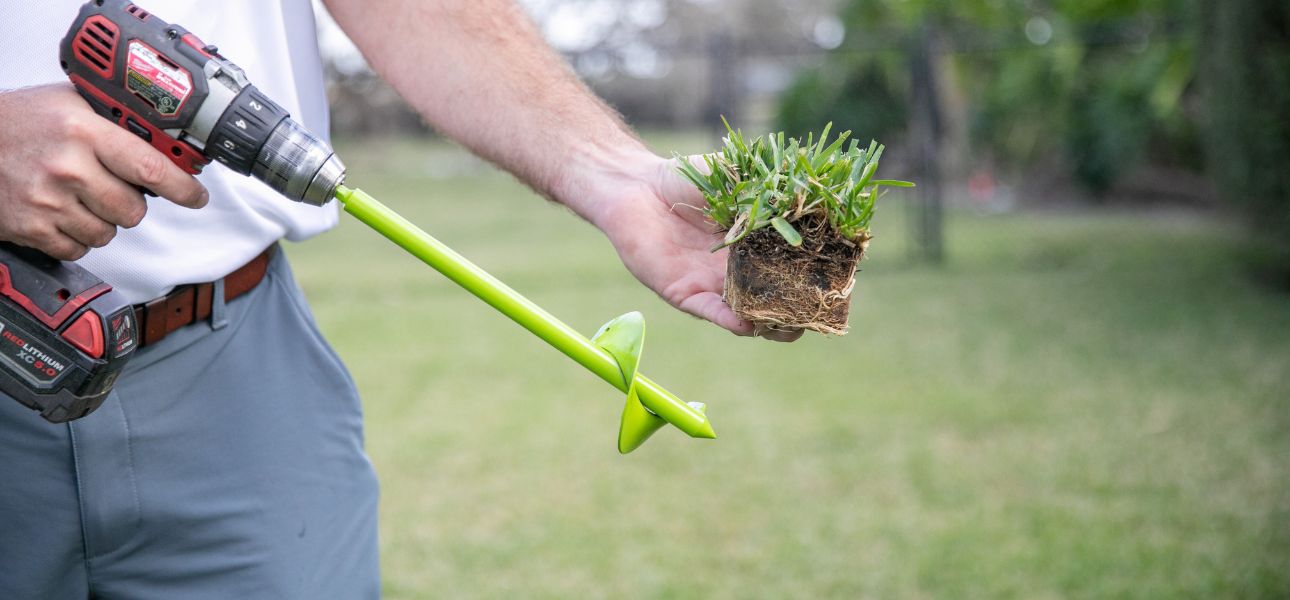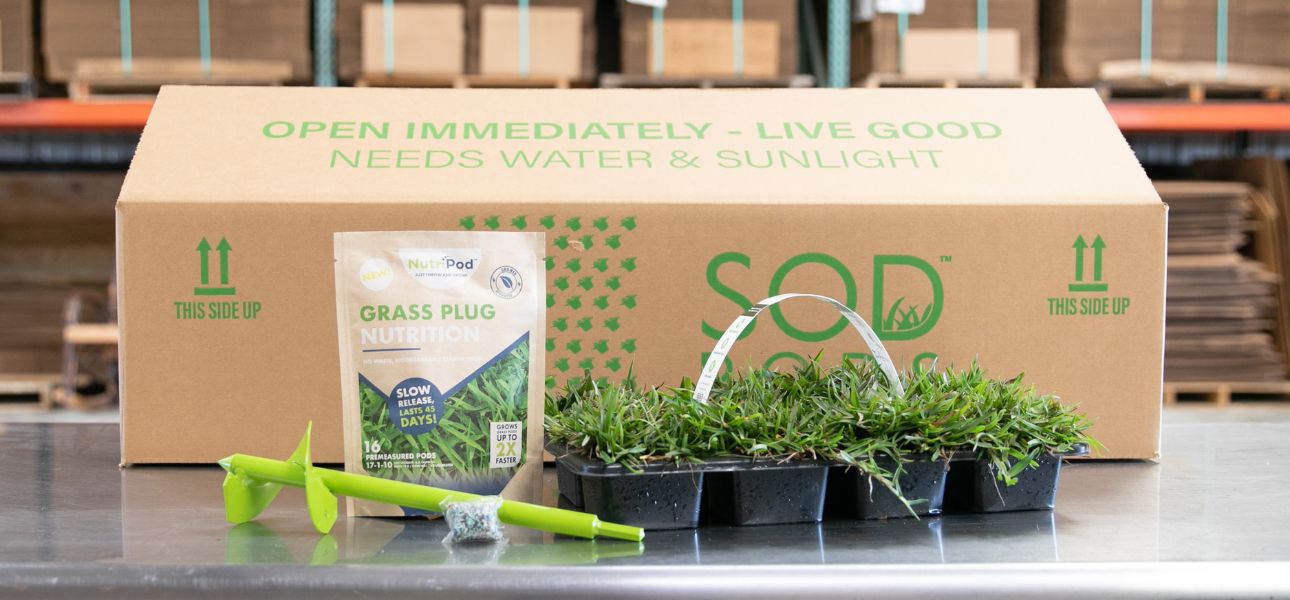What Causes Thatch in Lawns

Thatch is a key element of lawn maintenance that is beneficial in moderation but can pose significant issues when it builds up excessively.
Lawn thatch is an accumulation of organic debris between the grass and soil. It forms when grass produces more debris than it can break down, with the most decay-resistant matter, like stem nodes, crowns, and roots, making up the bulk. A thin layer of thatch can benefit your lawn by moderating soil temperature, retaining moisture, and cushioning the roots to reduce wear. However, if thatch exceeds half an inch, it prevents air, water, and nutrients from effectively penetrating the soil. The result is a lawn more susceptible to pests, diseases, and weed growth, made worse by the reduced tolerance to drought, heat, and cold.
What Contributes to Thatch Buildup?
If your lawn is building thatch faster than it can break down, it often indicates that it lacks beneficial microbes that break down the organic matter. Several factors can lead to the absence of healthy microbial activity in the soil, mainly the incorrect use of lawn fertilizers, herbicides, and pesticides. When used excessively, these chemicals can harm the microorganisms in the soil, disrupting the natural ecosystem that supports healthy grass growth. SodPods®, your trusted provider of grass plugs for sale, lists some other reasons why thatch accumulates in the soil.
Soil Compaction: Compacted soils can restrict nutrient, water, and air movement essential for microbial activity. This compaction occurs naturally over time due to soil settling and is common in high-traffic areas or lawns with heavy clay soils.
Lack of Organic Matter: Organic matter serves as a food source for beneficial microbes, so soils lacking in organic content may struggle to support a healthy microbial community.
Harsh Weather Conditions: Environmental stressors like extreme heat and drought can harm and even kill certain microbial species. These conditions can also dry out the soil, limiting water and nutrients essential for microbial growth and metabolism, further decreasing microbial activity.

Lawn Care Practices That Cause Thatch Buildup
Additionally, improper lawn care practices, such as shallow or frequent watering, infrequent mowing, and over-fertilizing, can lead to excessive thatch buildup.
Light and frequent watering encourages poor, shallow root growth, increasing thatch accumulation. Excessive moisture also slows organic matter decomposition. Infrequent mowing allows grass to grow taller, producing more organic matter, while over-fertilizing stimulates excessive grass growth. Conversely, cutting the grass too short can weaken its ability to break down organic matter.
Overall, these practices cause organic matter to accumulate faster than it can decompose, resulting in thicker thatch layers.
How Much is Too Much Thatch?
A little thatch, usually less than an inch, provides benefits such as cushioning the crowns and roots of the grass from traffic, insulating the soil, and reducing moisture loss. However, if left unchecked, thatch can accumulate to the point where the grass roots into it instead of the soil. This weaker anchoring can increase susceptibility to stress and damage from foot traffic and an overall less healthy lawn.

How to Prevent Thatch Buildup
Over time, thatch naturally forms in your lawn. However, you can keep it from becoming too thick by correcting improper lawn care practices that can kill soil microbes and overstimulate grass growth, such as excessive watering or over-fertilizing. It is also necessary to take steps to increase microbial activity in the soil.
Avoid Excessive Watering: Overwatering your lawn can cause thatch to accumulate by stimulating excessive grass growth, which leads to more organic matter than the soil microbes can break down. Avoid this by watering deeply but less frequently, allowing the soil to dry out between watering sessions. We also recommend adjusting your watering schedule based on the weather and the specific needs of your grass. For example, most warm-season grass varieties, like Zoysia grass, usually require about one inch of water per week.
Use Controlled-Release Fertilizer: Fertilizers high in nitrogen are formulated to stimulate grass growth but, if used improperly or excessively, can contribute to thatch buildup. It's necessary to fertilize your lawn based on its specific needs, which you can determine through a soil analysis. Additionally, when planting grass plugs, consider using NutriPod®. This grass fertilizer is specifically designed for the controlled release of nutrients into the soil, supporting the establishment of new grass without the risks associated with over-fertilizing or nutrient leaching.
Reduce Pesticide Use: Pesticides, particularly broad-spectrum treatments, can harm the beneficial soil microbes that break down thatch. Limit pesticide use only when necessary and preferably use targeted options to help preserve these microbes and prevent thatch buildup.
Improve Soil Structure: Amending your soil by adding organic matter like compost or gypsum can gradually improve its structure over time, allowing for better air, water, and microbial activity. These organic materials also serve as a food source for soil microbes, aiding in the breakdown of thatch.
Aerate Your Lawn: Aerating your lawn removes plugs of soil from the lawn using a grass plug tool, like the SodPods® Power Planter, to receive soil compaction, allowing air, water, and nutrients to reach the root zone. Core aeration also creates channels for microbes to move through the soil easily, improving their activity and aiding in the decomposition of thatch.

Should You Dethatch Your Lawn?
In more severe cases, managing thatch may require dethatching. This process involves using a power rake to cut through the layers of dead grass and debris, removing excessive thatch, and opening channels for water, air, and nutrients to penetrate the soil. Read here for a complete guide on how to dethatch a lawn.
However, remember that the physical removal of thatch can be stressful to the grass and may leave bare patches, making your lawn look unsightly and necessitating repairs. One effective way to address these damaged and sparse areas and restore your lawn is using grass plugs.

Restore Your Lawn After Dethatching with SodPods® Grass Plugs
SodPods® offer a wide range of warm-season grass varieties, such as Bermuda grass, known for its excellent heat and drought tolerance and ability to thrive in full sun conditions.
Our grass plugs deliver several advantages over grass seed, including faster establishment, weed suppression, and heightened tolerance to less-than-ideal pH levels. Because they consist of mature grass with established root systems, grass plugs require less water to adapt to their new environment, making them ideal for regions experiencing drought conditions.
Rejuvenate your lawn with grass plugs. Explore our selection of warm-season grass plugs for a healthy, dense green cover year-round.


